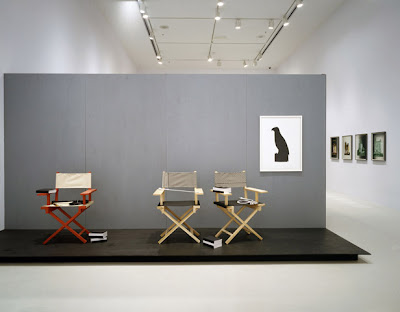Friedrich Petzel
David Kordansky
2008 Whitney Biennial
Wikipedia
NYT
Matthew Brannon’s work turns on the opposition—and ever-mounting imbrication—of art and design. After an early stint as a painter, he began to draw his inspiration from those printed materials that mediate everyday life in late-capitalist, early twentyfirst- century America, from posters and advertisements to promotional flyers and take-out menus. But if Brannon’s iconography conjures mass-produced, throwaway sources, his methods are laboriously handcrafted, even old-fashioned: screenprint, letterpress, and lithograph works, often executed in a limited palette and consistent in their graphic rigor. His art seems on first glance disarmingly direct. But as one turns to the text paired with his images for explication or illumination, disorder intervenes. An early series recalls the conventions of posters for horror films: in Sick Decisions (2004), the driveway leading to a stately house is cloaked by shadows cast by bare, looming trees. In place of what look to be credits in the lower part of the work, however, is a string of pithy non sequiturs: this film is “A Desperate Appeal Release,” starring, among others, “Abuse of Education” and “Misplaced Trust,” with a screenplay by “101 Unanswered Phone Calls.”
------------------------------------------
Matthew Brannon is known for his use of fine art and commercial printmaking alongside a classic sense of graphic design as a means of camouflaging his unpleasant and/or absurd content. This strategy is less a gimmick than an acceptance of the psychoanalytic model which believes that content is filtered before it is exposed. The balance of text and image in the letterpress prints provides the clearest example of this approach. One finds in them a word play dealing with career anxiety, alcoholism, insecurity, guilt, humiliation, sexual misadventure and so on, paired with bedside still-life images of lamps and statuettes. The consistent theme of success and failure here advances to a more literary like form both supporting and opposing the idea of the autobiographical. What Brannon began as mimicking the model of a film poster now operates on it's own visual terms with each print acting simultaneously as chapter and setting.







No comments:
Post a Comment